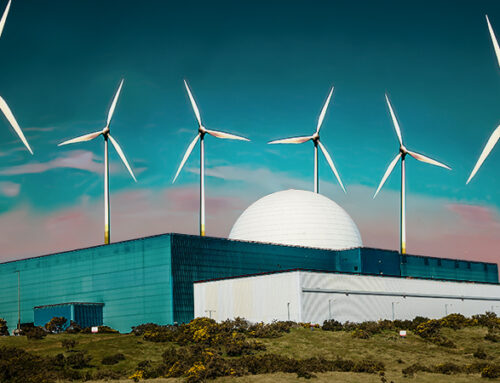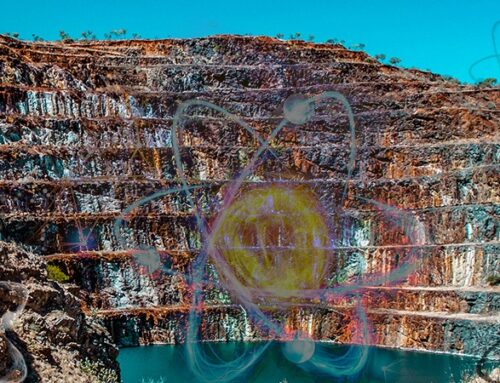EDF’s nuclear worries continue
In an update this week the came as a shock to exactly nobody, EDF announced a further cost over-run and delay at it’s new nuclear plant at Hinkley Point C. When the project was first mooted in 2007, EDF claimed Britons would be cooking their Christmas turkeys on electricity from the plant in 2017. By the time contracts for the plant were signed in 2016, the budget was set at £18 billion and the expected commissioning date was 2025 – now the costs have ballooned to £25-26 billion (in 2015 money), and the opening delayed to mid-2027, but EDF has warned that the “risk of further delay of the two units is assessed at 15 months”. The latest excuses for the revised costs and opening date are supply chain problems relating to covid and the fact that during the pandemic fewer staff were allowed on site.
In the meantime, the opening of Olkiluoto was delayed again a couple of weeks ago and is now expected in September, after repair needs were identified in the generator cooling system, which will take about three weeks. There is no news on a possible re-start date for Taishan-1 which has now been offline for almost a year. Back in January, EDF updated its projections to the flagship EPR at Flamanville expecting a new opening date at the end of 2023 and a total cost of €12.7 billion although in 2020 the French public accounts committee the Cour des Comptes had assessed that the cost may exceed €19 billion.
The slippage in the Flamanville timetable will be worrying for EDF – in 2017 the French nuclear regulator, Autorité de Sûreté Nucléaire (“ASN”), instructed that the lid of the reactor pressure vessel must be replaced in 7 years after anomalies were found in the steel – this was a concession that was intended to allow the reactor to run for some period before the replacement being made in order not to delay the opening. EDF has placed an order for the lid and expects it to be delivered by the end of 2024. With the 7-year deadline now uncomfortably close to the commissioning date, any further delays to the schedule could see the containment lid having to be replaced before the reactor enters service after all. ASN also requires a satisfactory resolution of the problems at Taishan-1 before allowing Flamanville to open.
The ASN has also warned that fixing the corrosion problems at some of existing French nuclear reactors would require a “large scale” plan and “several years” and there is a risk more reactors could be halted. Bernard Doroszczuk , president of ASN, told a parliamentary hearing last week that EDF had checked 35 weldings for corrosion, a third of the total that must be examined by the end of June. Currently 12 reactors are offline due to the issue which includes four N4 reactors, five 1300 MW series reactors and three 900 MW reactors.
A total of 30 reactors in France is currently offline – the rest for routine maintenance or ten-year outages. While the cause of the corrosion issue remains unknown, the older 900 MW reactors appear to be less affected than the rest of the fleet, and there is speculation that the issue is related to the way in which the original Westinghouse design was “Frenchified” for the French market with a new “geometry of the lines” creating a phenomenon of thermal stratification of the fluid at the top and bottom of the pipe, generating stress in the weld zones. Full resolution could take years, and Doroszczuk also warned against assumptions that life extensions to 60 years for any of the fleet would be possible.
Britain needs a credible nuclear strategy, not just wishful thinking about life extensions
Speaking of lifetime extensions, the British Government has reportedly asked EDF to consider keeping Hinkley Point B open despite plans to close it this year. Hinkley Point B is one of two reactors that is closing this year after cracking in their graphite cores caused prolonged safety outages. Late last year EDF also brought forward the expected closure dates of Heysham 2 and Torness from 2030 to 2028 for the same reasons.

While last week the Public Accounts Committee in a report that was otherwise about nuclear de-commissioning costs, warned that the closure of the Advanced Gas Cooled Reactor (“AGR”) fleet “will result in a significant reduction in the UK’s generating capacity until new capacity comes online”. Given the reasons for the closure of the reactors, it seems highly doubtful that any further life extensions would be feasible, and even if they were, would EDF be able to make the necessary investments when it clearly has so much work to do to get its French fleet back to full use.
“The Department (BEIS) working with the Office for Nuclear Regulation (“ONR”), EDFE, and Ofgem should urgently review whether it would be technically feasible, safe, and cost-effective to extend the lives of any of the remaining operating stations if needed and report back to the committee within 4 months. The Department and NDA (Nuclear Decommissioning Authority) should publish plans within 12 months setting out how they will make best use of NDA’s nuclear sites in future, including whether they are suitable for new nuclear infrastructure, such as modular reactors. In particular they should clarify how the transfer to the NDA from EDFE will allow for these Modular reactors,”
– Public Accounts Committee
The British Government has recently made a new commitment to nuclear power, which is welcome news, but comes too late to meet current security of supply needs which may become critical this winter. 24 GW of new reactors are planned by 2050 including both large plant and small modular reactors, although the first of these is not expected to be commercialised before 2029. Prime Minister Boris Johnson has said he would like to build one new reactor per year rather than one per decade, but unless the Government shows the imagination to move away from EDF’s clearly very troubled EPR, that seems unlikely to be realised.
 There are some promising signs with the news of talks with Korea Electric Power Corporation (“KEPCO”), however, Korea uses pressurised water reactors and its new APR+ technology has also experienced problems.
There are some promising signs with the news of talks with Korea Electric Power Corporation (“KEPCO”), however, Korea uses pressurised water reactors and its new APR+ technology has also experienced problems.
As regular readers will know, I favour the Advanced Boiling Water Reactor – these have been licenced in the US, Japan and Taiwan and were built in Japan on time and on budget prior to Fukushima, with a build-time of around 4 years. It is completely beyond me why the Government is not in discussions with GE, Hitachi or Toshiba about the prospect of building ABWRs in the UK – this was the original proposal for the Wylfa Newydd site and remains the most promising of all the currently available options.
The UK’s best nuclear strategy would be to pursue a diversified approach. This may seem counter-intuitive given the received wisdom about learning curve bringing down costs, but a 2020 study by MIT in the US found that site-specific challenges were more significant than any scale or learning curve benefits. That being the case, a diversified approach would mitigate the risk associated with developing a fleet based on a single technology both in the construction phase as seen with the EPR (and all the other 3rd generation reactor technologies) or in operation as is evident in both the British and French fleets where different systemic issues have been identified.
I would commission at least one ABWR immediately, ideally after a competitive process with the three large ABWR developers, and ensure that the ONR works with the US, Japanese and Taiwanese regulators to ensure rapid certification of the technology. I would also engage with Rolls Royce to understand why it envisages such long lead times given they already have a large number of small nuclear reactors in operation powering nuclear submarines, where the reactors are required to operate in significantly more challenging conditions that a civilian power project requires. And I would continue with the discussions with KEPCO and others in relation to large reactor projects. I would also support alternative nuclear technologies such as molten salt reactors, investigating whether their development could be accelerated. I definitely would not be committing any more taxpayer money to EDF and its EPR, so Sizewell C would not be a consideration until EDF can demonstrate that the technology works.
Nuclear power is the only zero carbon generation technology that can operate reliably round the clock irrespective of the weather, and with much lower operating cost volatility than gas-fired generation (due to the different way in which fuel is procured, although part of my nuclear strategy would involve strategic supply agreements with Australia and Canada for uranium). With security of supply rapidly declining, nuclear power is not going to resolve the near-term crisis, but with shorter delivery times than the alternatives, ABWRs could be part of the medium-term solution. The Government needs to bite the bullet and get on with it…






“It is completely beyond me why the Government is not in discussions with GE, Hitachi or Toshiba….”
Yes. it defies all logic, unless we remember that neither GE, nor Hitachi, nor Toshiba are anything to do with ‘Europe’.
Sorry to bring this old chestnut up and not meaning to be a conspiracy theorist, but this government seems hell-bent on keeping us tied to the EU in one way or another; perhaps the clue is in the ‘E’ of EPR?
I can see no other reason why the government persists in lumbering us with this company’s woeful build-record and cost-overruns.
But in that case why the discussions with KEPCO…?
GE Hitachi have dropped any interest in Big-Nuclear and have put all of their eggs into the BWRX-300 SMR. The first one, for OPG in Ontario will commence operation in 2028 and site clearance is already underway.
An overnight capital cost (OCC) rate of US$2,250/kW would get the UK 300 MW of capacity on-line for £500 million. 3.200 MW of capacity would have an OCC of £5.3 billion compared to HPC’s £25-26 billion. With a build programme of 2 to 3 years, and built in series/parallel, it’s reasonable to assume capacity could be added just as quickly or quicker than any Big-Nuclear project.
As significant as the greatly reduced OCC is the invest-ability of the BWRX-300, since the build programme is no different to those of dysfunctional wind and solar power plants (WASPPs). This levelled playing field means the cost of capital will be the same and it’s a fair assumption that commercial investment will syphon off most, if not all, of investment from intermittent WASPPs.
Big-Nuclear is dead and the future of nuclear power is SMRs like the BWRX-300. The affordability and commercial backing means the cost of electricity generated by widespread deployment of the BWRX-300 will greatly reduce electricity bills, which disproportionately benefits the poorest and underprivileged in society. Those millions dumped into the eat or heat category from bill increases wrought by dysfunctional WASPPs will have money back in their pockets to enhance their quality of life.
Molten salt reactors do not need uranium, which is another benefit of the technology. Neither is it new technology. It was turned down in the US because the governments wanted to produce nuclear weapons for which they needed uranium reactors.
I hear this a lot David, but it is simply untrue and does not stand up to scrutiny.
There is little relationship between a simple graphite moderated, air-cooled reactor pile used for plutonium production and the US electricity producing fleet. In fact the UKs MAGNOX design was a lot more “weapons” friendly than anything the US built.
The reality is that Uranium fueled PWRs were selected because they demonstrated the best performance and reliability for their purpose, which was to drive submarines. A sodium cooled reactor was also built and tested in the second nuclear submarine ever and was deemed to have inadequate performance. A history of the time would also tell you that the navy was pushed into providing a civilian reactor, resulting in Shipping port. A reactor that was in fact run as Thorium Uranium breeder reactor towards the end of its life. In Light Water reactors Uranium forms a superior oxide to Thorium which makes it a more robust and economical fuel. It also benefits from not requiring complex spatial calculations to develop a working core design and to ensure consistent power production throughout the fuel-cycle. If you want further evidence, the Canadians developed there nuclear programme without weapons and fairly independently from the US. The CANDU reactor is perfectly capable of using Thorium fuel cycles, yet they have never chosen to do so. I couldn’t tell you why, but I am sure there is a good reason.
Molten salt reactors were specifically developed for the air force, but the weight made it a non-starter, so they also share a military background.
I find it so depressing that our home grow nuclear capability is now non existent but we are where we are and its very evident the EPR design has issues and we need to invest in a proven design. Personally i’d dust down the AGR blueprints and build a few of them on the site of decommissioned Magnox reactors.
Hi Kathryn……another great summary of the troubled Nuclear industry.
Personally I feel that like the railways, privatisation of the nuclear programme was a bridge too far.
The Central Electricity Generation Board (CEGB) could hardly have done a worse job than where we are now.
Finally am I right in thinking that at the end of their working life ownership of the nuclear fleet is returned to the UK government ?
All future decommissioning & clean up cost’s back with UK tax payer”s; more £billions yet to hit the books.
EDF must be doing cartwheels in celebration of such a sweet deal.
Barry Wright, Lancashire.
Hi Kathryn, I too am a huge fan of ABWR. Are you in touch with GEH at all? It would be great news indeed if they are still offering the ABWR. I read a discouraging article in Nikkei the other day saying that Japan is pivoting away from whole-plant exports and focusing on component-part exports.
https://asia.nikkei.com/Business/Energy/Japan-s-nuclear-tech-exports-shift-focus-from-plants-to-parts
I regret to say that the 2 ABWRs in Taiwan remain mothballed, having never produced a single kWh or electricity, due to the rampant anti-nuclear sentiments here. An incredible shame. There was a referendum on whether or not to restart the project last December. I tried to get in touch with GEH to see if they would stand behind their plant. I never got a response, maybe because I didn’t get through to the right people. In any case, the referendum failed.
As far as I know, the last ABWR to be complete is Shika 2 in Japan in 2006 was it? All in all, there were four: Kashiwazaki Kariwa #6 and #7, Hamaoka #5 and finally Shika 2. All I believe were on-time on-budget. It would truly be a shame for the world if that lineage is broken, but yet this is what it looks like now.